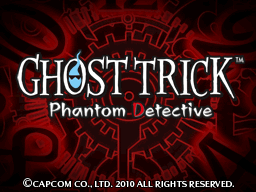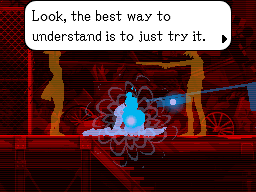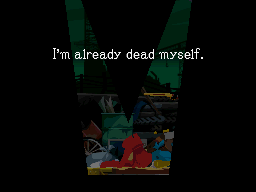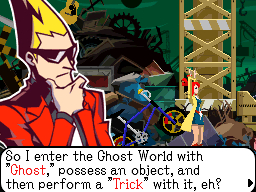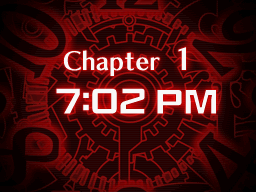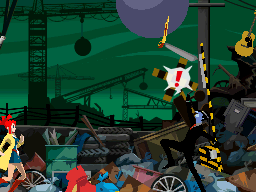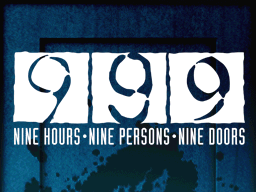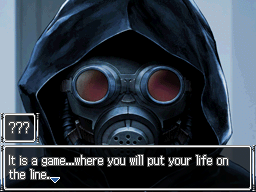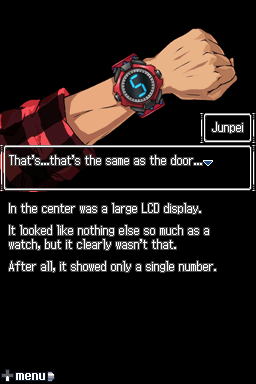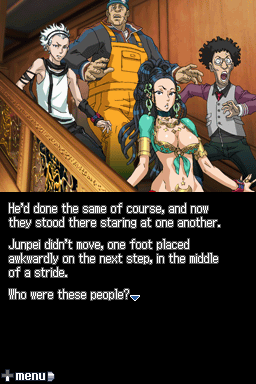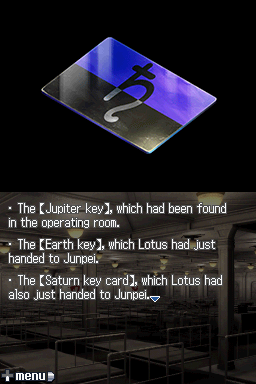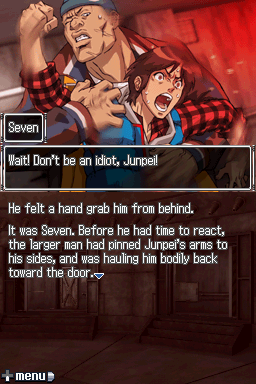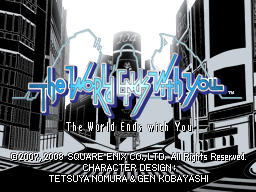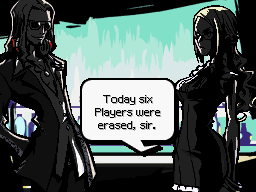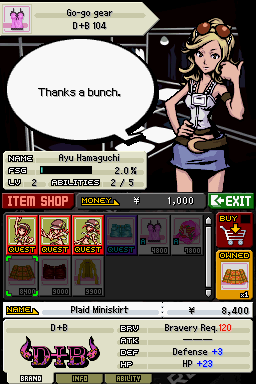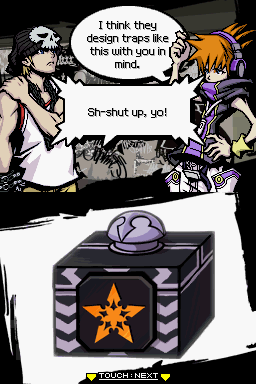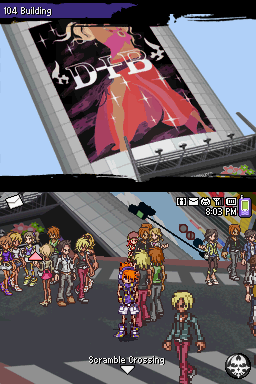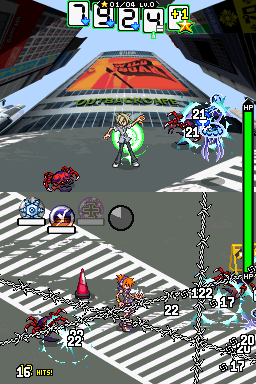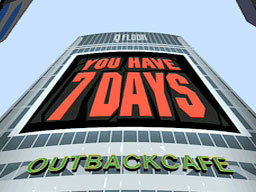| Three DS Games You Must Play 2012/03/10 |
| . | The Nintendo 3DS turns one year old this month. Despite a slow start, it seems to have picked up steam, with Nintendo bragging that it's actually now breaking sales records, probably thanks in no small part to last summer's price drop, and, well, some new games released that aren't just ports.
But with Nintendo planning to release Pokémon Black 2 and White 2 for the original DS, it's clear that they still support its wildly successful predecessor, at least for a little longer. Despite the fact that a new Pokémon game for the 3DS would boost hardware sales tremendously, their rationale is that DS games can also be played on the backwards-compatible 3DS.
That being said, I was reminded of how incredible the vast library of DS games is. Almost anyone with a DS, assuming they play more than Pokémon or Brain Age, will tell you how much they love the Professor Layton series or the Ace Attorney series. And I wholeheartedly agree. But instead of repeating what's been said before, I decided to revisit and recap some lesser-known DS games that I feel everyone should play.
DS and/or 3DS users, here is my list of three DS games you must play:
● ● ● ● ● ● ● ● ● ●
Most games end when the main character dies, but (if you couldn't discern it from the title) Capcom's Ghost Trick: Phantom Detective only just begins. Having just died, the protagonist, Sissel, has not only lost his life, but his memory as well. Finding himself in spectral form, and in a dire situation where a girl is held at gunpoint, a voice seemingly coming from a discarded desk lamp teaches Sissel that he can perform "tricks", whereby he manipulates objects. Using tricks is how he will save the lives of several other people that night, as he tries to find out about his identity before the night is over.
The gameplay is superb, with lots of items to manipulate. Many objects with possessable "cores" are used as a means for Sissel to jump from object to object, so just moving into a desired position is part of each puzzle. There's only ever one solution per scenario, but many are quite inventive, and not quite easily discernable when you begin, so it is quite satisfying when you do eventually figure them out. Sissel can revisit the last four minutes of a person's life however many times he needs to in order to prevent disaster, which is really just saying that there's going to be a fair bit of trial-and-error as you figure out how to successfully use these ghost tricks to manipulate objects to solve increasingly challenging puzzles. And once you think you've mastered the gameplay, some new ideas mix things up, and keep the experience fresh.
The graphics are boldly colourful, and the animations of all the wacky characters are beautifully fluid. Handheld games, by limitations of design, can't ever have as detailed graphics as their current console cousins, but I believe that justifies a chance for designers to be more artistic and stylish with graphics, when they don't feel an obligation to be hyper-realistic. The cartoony yet crisp look suits this game well.
The story is also excellent. I won't get into it more than I have, for risk of spoiling it, as it is certainly a strength of this game. As you can probably guess, Sissel's quest for his identity entangles him into scenarios of larger scope, where he must save the day with his unique abilities. I absolutely loved the ending. The characters are varied and wacky, and you really feel for them. The twists are intriguing, and the before-the-night-ends deadline makes it all the more gripping, as each chapter title tells you what the current in-game time is. The story is definitely why Ghost Trick: Phantom Detective is on this list, and sets it apart from other possession-based games like Geist (GameCube).
If there is a negative point in this game, it's the same one that plagues nearly all adventure games - there's not really anything left to do once you've played through it all once. But if you haven't played it at all yet, then you owe it to yourself to do just that.
● ● ● ● ● ● ● ● ● ●
Chunsoft's 999: Nine Hours - Nine Persons - Nine Doors is another absolutely recommendable game for the DS. So long as you can handle the M rating (for gore and language), all-around general creepiness, and you don't mind a lot of reading. And I do mean a lot.
Junpei, the main character, wakes up, trapped in a room with a "5" painted on the door, and wearing an unremovable watch-like device that also displays the number 5. After escaping the first room, he soon finds that he is one of nine (very different) people, apparently trapped on a boat called the Gigantic (similar to the Titanic), and they have nine hours to find a door with a "9" painted on it to escape before the Gigantic sinks. So says the title...nine hours, nine persons, nine doors. Besides death by drowning from failing to escape in time, any failure to abide by the rules of this "Nonary Game" set forth by their kidnapper, a mysterious person named Zero, results in death by the detonation of bombs placed in their stomachs.
It sounds like something out of a Saw movie, to be sure. But the premise is interesting, particularly if, like me, you're fond not only of words, but of numbers. Each character has a different single-digit number on their watch (which, with the exception of Junpei, they also derive the names that they choose to go by). There are doors with each of the possible single digits on them. Add two or three participants' representative numbers - and when the sum is two digits, adding those digits together so a single digit remains - to see which door that group can safely pass through. This is the concept of the "digital root", which comes into play elsewhere in the game, but primarily for the doors. The idea becomes fascinating when you have two or three possible doors in front of you and think of which door to go through and with whom, which always affects how the other groups shape up. It also really makes you think when the plot thickens and people go missing, and you think back about who could have gone through what other doors when and with whom.
As you go through each numbered door, you face a puzzle, involving the items and elements within that room, to progress. While in each room, you also learn a lot about your fellow hostages, especially their motives and connections. You will also often learn from them about interesting scientific mysteries - like about ice-9 and glycerin crystallization - though some are embellished from their real world counterparts, but somehow intriguing nonetheless, and many are actually important plot points that have some bearing later on in the story. Outside of those main puzzle rooms, there are also chances to make choices (besides just which door to go through next) that do affect which ending you get.
Yes, as the game is an interactive visual novel, it should be no surprise that there are multiple paths and multiple endings. Some of the endings are required to unlock or fully understand the "true" ending. Because a multiple playthrough is expected and necessary, replays are made much more easier by being able to speed through all the dialogue that has been encountered before. Choices previously made are greyed out, so you will be able to see what options you have yet to try. Unfortunately there is no way to skip or speed through the puzzles, which will be the same with every playthrough. The repetition of puzzles - which you're not going to really enjoy by the third or fourth time through - is probably the only negative point I would give this game.
Sure, it's creepy, bizarre and disturbing. But, especially when you find yourself on the path to the true ending, you will want to keep plowing ahead to find out what this is all about. The story is certainly one of the best I've seen in video games, perhaps, ever. 999: Nine Hours - Nine Persons - Nine Doors falls within the top ten video game stories in my memory. Or, hey, to fit with the theme - it's likely within the top nine. And I think I've played a lot of games, so that is really saying a lot. You can agree with me or not about whether it's really that good of a story, but it's definitely clever and memorable, and therefore very worth a shot.
Unfortunately M-rated games, particularly on handhelds, never seem to sell really well. Thankfully, this game isn't totally forgotten, as its successor, Zero Escape: Virtue's Last Reward (also known by its literal anglicized title, Extreme Escape Adventure: Good People Die) is coming to the PS Vita and 3DS. Sure, it's still in the handheld realm, but at least it's another chance to show that some of the most compelling video game stories can come in any size. If I had to give 999: Nine Hours - Nine Persons - Nine Doors a numerical score, well, the title speaks for itself.
● ● ● ● ● ● ● ● ● ●
Square-Enix and Jupiter's The World Ends With You is an action RPG. Unlike Square-Enix's typical fantasy or futuristic settings for their other RPGs, this takes place in modern day Tokyo, specifically the Shibuya shopping district. The game is unique, with its particular art style, J-Pop soundtrack, emphasis on fashion and cell phones, all evoking youth culture as it is in urban Japan.
As seems to be common with all three of these games I mention in this triple recap, the story begins with the main character waking up, not quite sure how he got there. Here, the character is Neku Sakuraba, a loner who finds himself in the Underground, a sort of realm between life and death, that co-exists with the real world, or "Realground". Invisible to and unable to interact with the living in the Realground, Neku finds himself in a game where he can fight for his life back, by giving up something precious to him. He soon partners with a girl named Shiki, and must succeed in daily missions over the course of a week, fighting creatures called "Noise" as well as the primary antagonists, known as the Reapers. And, as one would expect, the story only gets more complex as it goes on. By the end you may feel you need a philosophy or theology degree to understand it all, but I think the convolution of reality and existence is part of its intrigue.
The DS's specific features are well-utilized here, particularly in combat. Battles take place on two screens, with Neku on the bottom touch screen and his partner on the top screen. His partner is controlled with the D-Pad while Neku fights with touch controls. Depending on what pins Neku wears, you may fight by using your stylus to tap enemies, or holding your stylus on an enemy, or slashing across your screen. Pins, which are the weapons here, are an integral part of the game, with many to collect, with different designs and different powers, some being important to the plot, some as fetch items, some that work in combination with other pins, or for the mini-game, "Tin Pin Slammer". As it is an RPG, it's unsurprising that pins can level up and evolve into different forms, but as always, it is a fun mechanic, especially for completists. And with pins as unconventional weapons, we also have clothing as an interesting sort of armour. Fashion trends in particular districts will affect how the effects of whatever brands you're wearing are boosted or weakened, but insisting to fight in a certain area with a certain brand may raise the popularity, and hence, the strength of the effects of that brand.
There is also considerable replay value. After completing the game, the events of particular days can be replayed (while retaining items and stats), as well as "Another Day". By doing so, and unlocking "Secret Reports", one gets a deeper understanding of the quirky world of The World Ends With You.
Neku and other characters from this game are slated to appear in Kingdom Hearts: Dream Drop Distance for the 3DS, along with the crossover of Final Fantasy and Disney characters as the series is known for, so though this game is perhaps underrated or underappreciated, it's not entirely forgotten. Or perhaps the developers would like to remind everyone of The World Ends With You, but I'll save them some trouble by telling you that you need to play this game. If you like RPGs but want something different from the norm, give this a try!
● ● ● ● ● ● ● ● ● ●
These three games are in different genres (puzzle, novel, action-RPG), and each have a distinctive art style. But in the course of writing this triple recap, I noticed some similarities between all three of these DS games. They all begin with a main character who wakes up, finding himself placed in bizarre circumstances. They all must solve the mystery or get to the end within a certain amount of time (though in all cases, this is not real-time, but the time advances according to the needs of the story). The stories all have themes of life/death/reality. Perhaps these are the kinds of mysterious stories that interest me - but why wouldn't they interest anyone? If you play games for the story, here are three great ones! I think the biggest mystery involving these three games is that very few other people I know have played them. If you have a DS (or 3DS), you really shouldn't deny yourself these incredible handheld experiences.
| . | |||||||||||
